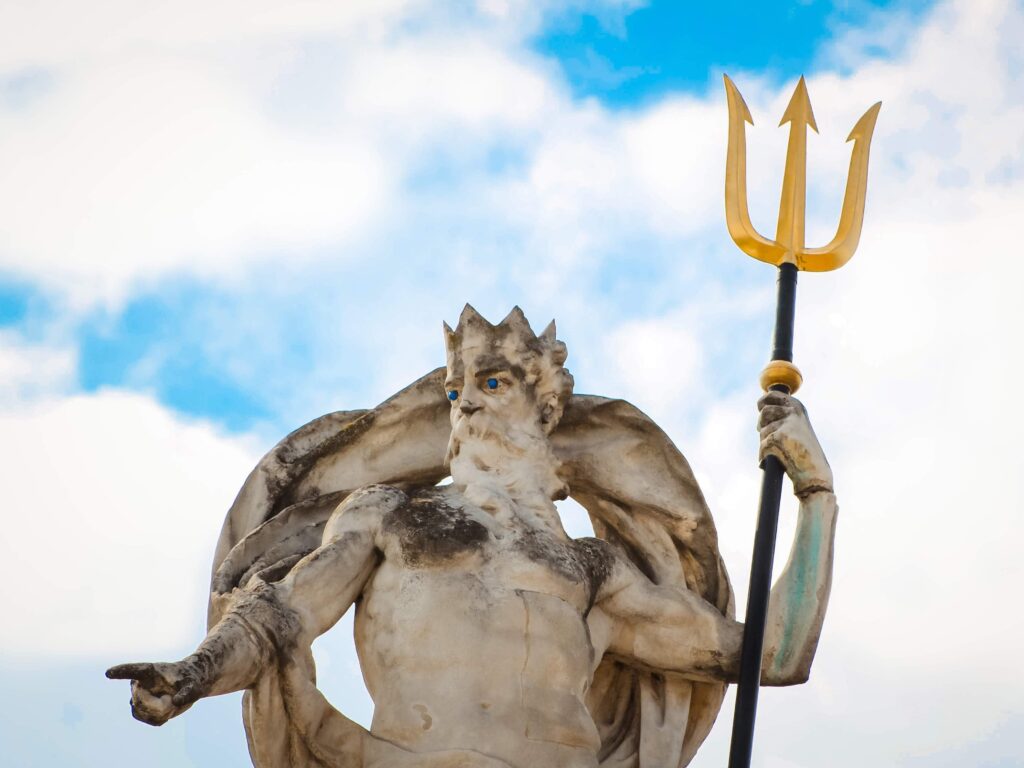Familiar with personification but aren’t too sure what its effect is when used within a text?
Don’t stress! We’ll walk you through what this literary technique is, various examples and how to analyse it in your essays.
Check it out!
What is Personification and Its Effect?
Personification Examples
Why is Personification Used in Writing?
How to Use Personification in Writing
Where to Use Personification in Writing
Personification VS Anthropomorphism
Personification VS Pathetic Fallacy
How To Analyse Personification and Its Effect
Personification Analysed Examples
Quick Summary of Personification
What is Personification and Its Effect?
We’ve all heard common phrases like “the trees danced in the wind”, “the stars winked in the sky”, and “the sun smiled down happily on the beach”, — these are what we call personification!
Personification Definition
Personification refers to a technique in which non-human and non-living or inanimate objects are given human characteristics.
That’s the general definition, but personification may also refer to abstract concepts given human form!
Generally, personification adds life, energy, and an element of relatability to things that would otherwise be lifeless, making a text a richer read for an audience.
For example, a core purpose of personification is to enhance imagery in a scene, as well as intensifying the emotion of characters, their feelings, and their surroundings.
Personification is thus used in texts that heavily feature figurative descriptive language, commonly appearing in poetry and novels, and sometimes in film.
In effect, personification adds life, energy, and an element of relatability to things that would otherwise be lifeless. This technique is utilised heavily in poetry, and features commonly in figurative descriptive language.
Examples of Personification
Some famous examples of personification that you might have come across include:
Common Idioms
For instance, New York is considered “the city that never sleeps”, and it’s often said that “actions speak louder than words”.
T. S. Eliot, Preludes
“And now a gusty shower wraps / The grimy scraps / Of withered leaves about your feet”
The Olympians in Greek Mythology
the Greek gods and goddesses are some of the most famous examples of personification. The pantheon includes such personifications as love and beauty (Aphrodite), war (Ares), wisdom (Athena), and the family (Hera).
F. Scott Fitzgerald, The Great Gatsby
“Occasionally a line of grey cars crawls along an invisible track, gives out a ghastly creak, and comes to rest.”
“Their house was…a cheerful red-and-white Georgian Colonial mansion, overlooking the bay.”
Why is Personification Used in Writing
There are several reasons a composer may utilise personification.
Firstly, personification allows complex concepts to be explored more simply through metaphor and analogy. In doing so, an author can explain the complexities of their narrative worlds in a way that the audience understands, by relating to the material in front of them.
Personification is also often used by composers to enhance the imagery and engagement of their texts, and to set the scene of a story.
Depending on how personification is used, objects can become intrinsic parts of the atmosphere of a text; for instance, an eerie moving house might indicate haunting and horror, while dancing daffodils are reminiscent of good tidings and happiness.
Authors and filmmakers can therefore use personification to make an idea more relatable to an audience, often by tapping into their senses and own experiences.
Given that personification also means that abstract concepts can take on human forms, it’s a key tool in ensuring that readers are able to understand such concepts before they keep going in a story.
How to Use Personification in Writing
Personification is most commonly used in novels and poetry, and composers have several reasons for using personification.
At its core, personification is a technique used to create imagery. It’s therefore really valuable when it’s used in conjunction with other techniques, including pathetic fallacy, simile and metaphor, analogy, emotive language, and characterisation.
Because personification allows us to externalise particular qualities or emotions, many composers use it as a form of metaphor or analogy to explain the complexities of their texts, and the emotions and ideas underpinning them.
For instance, Rick Riordan’s Percy Jackson series particular personifications of the Greek gods and goddesses is a really good way for readers to understand the characters’ views on particular things, as well as understand what the pantheon is like.
Where to Use Personification in Writing
Thus, composers often use it with other techniques to build up a holistic picture of whatever they are describing within a passage. Personification is absolutely key to enhancing the world of a text, because it provides additional tools to create imagery.
In particular, it’s really important for creating particular atmospheres and setting the scene.
Depending on how personification is used, it can also cause particular objects to become intrinsic parts of a story, or introduce elements that are memorable because of what they represent about a reader, a character, or humanity in general, immersing audiences more strongly in a work.
Personification VS Anthropomorphism
Many students often use personification and anthropomorphism interchangeably. Don’t make this mistake!
It’s important to remember that personification and anthropomorphism are two different techniques:
Personification is about giving something qualities or traits that are human-like to non-human objects and concepts, but not actually making them human. That is, objects aren’t described as having the capacity to talk or feel the way people are.
Take this example of personification: “The old typewriter called out to the author.”
The phrase “called out” isn’t literal — the typewriter is not literally speaking. Instead, it’s used to enhance the imagery and emotion of the sentence – the typewriter has been a companion of the author, almost a friend, and is their ‘calling’.
On the other hand, anthropomorphism is literal, and gives a non-human object or animal the ability to almost become human. These objects (including animals, plants, vehicles, or household items) are able to talk, think, and behave like humans.
For example, the characters in Toy Story all act as though they are human, despite being toys. This is literal, and is therefore a form of anthropomorphism.
Other examples include Thomas the Tank Engine, the Ents in Lord of the Rings, and the household items in Beauty and the Beast.
Here’s a table summarising the key differences:
| Personification | Anthropomorphism |
|---|---|
| Giving human-like qualities or characteristics to something non-human and non-living. It can also be used to personify an abstract concept. | Giving human qualities and traits to animals or other non-human objects. These can include living things. |
| The purpose is to create imagery, or to enhance emotion, not to cast something as human (figurative). | The purpose is to actually make something appear living and human (literal). |
Personification VS Pathetic Fallacy
In a way, pathetic fallacy can be thought of as falling under the general technique of personification. The crucial difference is that:
Personification attributes any human quality or trait to a non-human object. This could be a behaviour, an emotion, an action, or a pattern of speech (to the extent that it’s figurative).
An example: “The rain sang against the window pane.”
By contrast, pathetic fallacy occurs when human emotions alone are given to something non-human. Pathetic fallacy is a very common technique in films, as it’s incredibly easy to visually depict weather and seasons.
Most commonly, this is used in conjunction with weather or seasons as a way of representing a particular mood, often the mood of the character through whom the text is narrated.
| Personification | Pathetic Fallacy |
|---|---|
| The attribution of human qualities to non-human things. | The attribution of human emotions to non-human things. |
| Personification is a broader term, encapsulating a variety of techniques. | Pathetic fallacy is a specific form of personification. |
| Personification is used to create vivid and beautiful imagery in a text. | Pathetic fallacy is used to reflect the actions and emotions of the story in nature/objects. |
Examples of Pathetic Fallacy
Funeral Scenes
Many funeral scenes are typically set during a thunderstorm or heavy rain (Tadashi’s funeral in Big Hero 6), or in dark lighting/at night (Dumbledore’s death in The Half-Blood Prince).
The Truman Show
Another famous example of rain being used as a pathetic fallacy occurs in The Truman Show: when Truman is upset, the rain falls directly on his person (of course, there’s other metafictive elements at play in this scene.)
The Great Gatsby
Another example is the line in F. Scott Fitzgerald’s The Great Gatsby: “For a moment the last sunshine fell with romantic affection upon her glowing face…then the glow faded, each light deserting her with lingering regret…” (Emotions ascribed = love, regret.)
How To Analyse Personification and Its Effect
When analysing personification, it’s a good idea to investigate:
#1: The Personification Itself
Which object is being personified? Which human qualities is it imbued with?
These two questions will allow you to understand to what end the personification has been used, and furthermore how the personification affects the story (i.e. how it sets the scene or adds to an atmosphere).
#2: The Author’s Purpose
why did the author choose to personify the object, in that way? What effect does it have on the narrative? What effect does it have on you as a reader?
Identifying the answers to these questions underpins your analysis of personification in a text — you must explain why an author made the choice.
Personification Analysed Examples
Example #1: William Wordsworth’s ‘I Wandered Lonely as a Cloud’
This poem contains many personifications of nature, done deliberately to visually and emotionally depict the poet’s connection with the scene before him. Some famous lines include:
“When all at once I saw a crowd, / A host, of golden daffodils.”
A number of times in the poem, Wordsworth refers to the daffodils as a “host” or “crowd”, likening them to a group of people.
In doing so, he makes the point that he is more at home in the humanity of nature than he is with the humanity of the people around him.
“Fluttering and dancing in the breeze” and “Tossing their heads in sprightly dance”.
In repeatedly referring to the daffodils as “dancing”, Wordsworth imbues them with the characteristics of ‘fun’ people who are making merry — in short, people that he would want to hang out with, because they know how to enjoy themselves.
He is also employing a metaphor on the beauty of nature by accentuating its grace and natural movement, showing it as a scene of charm.
“And then my heart with pleasure fills, / And dances with the daffodils.”
By personifying both his heart and the daffodils, Wordsworth cements the personification and humanity of the nature scene he has painted.
He portrays himself as one with the daffodils in all but body, thereby intensifying the emotion of the poem in its last line.
Example #2: Emily Dickinson’s ‘Because I could not stop for Death’
Emily Dickinson’s ‘Because I could not stop for Death’ ascribes personification and metaphor to the abstract concept of death.
The whole poem revolves around a journey the speaker took with Death as their companion, travelling in a carriage through various scenes and journeys that depict life. The following passage is an interesting one regarding personification:
“Because I could not stop for Death –
He kindly stopped for me –
The Carriage held but just Ourselves –
And Immortality.
We slowly drove – He knew no haste
And I had put away
My labor and my leisure too,
For His Civility –”
In this excerpt, Dickinson personifies Death as a companion, almost a friend, and definitely a person.
He is depicted as a relatively moderate being, a stark contrast to many other violent or cruel depictions of Death; this is on-brand with Dickinson’s general approach to more morbid topics, including death and the afterlife.
Check out our full analysis of Emily Dickinson’s poem ‘I Felt a Funeral in My Brain’ here!
Dickinson’s personification thus portrays Death as a person in his own right, who does recognisably human things (like driving a car(riage)), in an attempt to portray her own reconciliation with and emotions towards the otherwise abstract concept.
Quick Summary of Personification
We know that was a lot to digest, so here’s a quick summary of personification:
- Personification is the technique by which non-human, non-living elements are attributed human qualities, traits, and characteristics. It may also apply to abstract concepts.
- It’s used as a tool to enhance imagery and emotion in a text, but also to break down complex concepts to make things more accessible for readers.
Things we recommend that you look out for when you’re analysing personification include:
The Personification Itself
Which object is being personified? Which human qualities is it imbued with?
These two questions will allow you to understand to what end the personification has been used, and furthermore how the personification affects the story (i.e. how it sets the scene or adds to an atmosphere).
The Author’s Purpose
Why did the author choose to personify the object, in that way? What effect does it have on the narrative? What effect does it have on you as a reader?
Identifying the answers to these questions underpins your analysis of personification in a text. You must explain why an author made the choice.
Other Techniques
Be wary that anthropomorphism and pathetic fallacy also look a lot like personification, and try not to get them mixed up. Also look out for how personification is used in conjunction with other techniques, and what overall effect this creates.
And, that’s our guide for personification!
You can check out other language features we’ve written about below:
Are you looking for some extra help with studying English?
We have an incredible team of English tutors and mentors!
We can help you master your analysis of your English text by taking you through its summary, key characters and themes. We’ll also help you ace your upcoming English assessments with personalised lessons conducted one-on-one in your home, online, or at one of our state of the art campuses in Hornsby or the Hills!
We’ve supported over 8,000 students over the last 11 years, and on average our students score mark improvements of over 20%!
To find out more and get started with an inspirational English tutor and mentor, get in touch today or give us a ring on 1300 267 888!
Rujuta Banhatti is currently a third year Law/International Studies student at UNSW. As a Content Writer at Art of Smart, she is super keen to be able to write (read: academically rant) about texts that she’s absolutely loved, both at school and in general.








